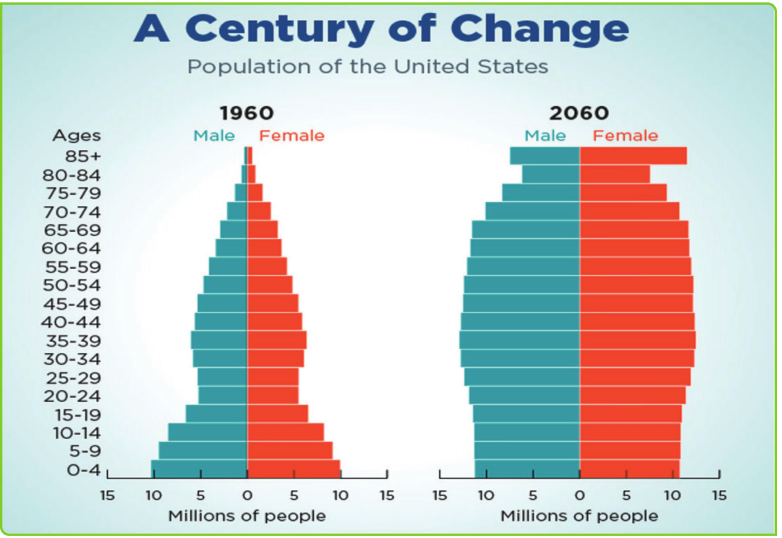AS STATES AGE, THE NEED FOR SENIOR-FRIENDLY HEALTHCARE AND HOUSING GROWS

As the median age increases in nearly every state, lawmakers and agencies are considering how to handle the needs of an aging populace. (AARP chart) The median age rose in almost every state last year, census estimates show, continuing a long-term trend that is pushing states to prepare for aging populations.
Seventeen states had median ages over 40 in 2022, according to new U.S. Census Bureau estimates of the age at which half of residents are older and half are younger. That’s up from 12 states in 2020 and just seven in 2010.
The oldest state in the country is Maine, with a median age of 44.8. It also was the oldest in 2010, at 42.7. In 2020, It was followed close behind by New Hampshire (43.3) and Vermont (43.2). Also among the 17 oldest states were Connecticut (40.9), Rhode Island (40.6) and Massachusetts (40.1).
Nationwide, the median age was below 30 until 1980, but it rose to 38.9 as of 2022, according to the bureau estimates.
That leaves more states planning for future health and housing challenges for older residents. Some states have issued or are considering executive orders, agency plans and legislation to assist state residents who need more help with health crises, housing and long-term care as they live longer.
Millennials started turning 40 last year, and the youngest baby boomers are quickly approaching 60.
“As the nation’s median age creeps closer to 40, you can really see how the aging of baby boomers, and now their children — sometimes called echo boomers — is impacting the median age,” said Kristie Wilder, a Census Bureau demographer, in a statement.
Lower birth rates also play a role and will likely continue to drive median age slowly but steadily higher, Wilder added. Some states have passed legislation requiring that health insurers cover fertility treatments in response to lower fertility rates, according to a University of California, Irvine study published last year.
Planning strategies
Vermont held six public listening sessions around the state last year to help prepare recommendations this year for Age Strong Vermont, its road map for an “age-friendly state.”
“Vermont had this older demographic for a long time but it’s taken a while for the state broadly to really reckon with that,” said Angela Smith-Dieng, Vermont’s Adult Services Division director. Part of the challenge is that older Vermont residents tend to live in big rural houses and need help with in-home care, renovations for mobility and transportation on demand, she said.
Vermont and New York joined other states already planning comprehensive strategies for aging populations: California, Colorado, Massachusetts and Texas, according to a January report by the National Conference of State Legislatures.
Only North Dakota is younger now than it was in 2010, down 1.2 years from age 37 to 35.8. The state’s burgeoning oil industry has drawn younger workers to jobs that pay well and don’t require four-year college degrees.
Besides the six New England states, others with median ages at 40 or above in 2022 were: West Virginia (42.8), Florida (42.7), Delaware (41.8), Pennsylvania (40.9), Hawaii (40.7), Wisconsin (40.4), New Jersey, Oregon and South Carolina (all 40.3), and Montana and Michigan (40.2).
The youngest states and the only ones with median ages below 37 were Utah (31.9), the District of Columbia (34.8), Texas (35.5), and Alaska and North Dakota (35.8).
On the county level, the median age in 2022 was as low as 20.9 in Madison County, Idaho, home of Brigham Young University-Idaho, where many young students are also starting families.
In 2022 there were six counties with a median age of 60 or higher in the nation: Catron County, New Mexico (62.1); Jeff Davis County, Texas (61.7); Harding County, New Mexico (60.5); Jefferson County, Washington (60.4); Charlotte County, Florida (60.2); and Highland County, Virginia (60.0).
— TIM HENDERSON/STATELINE